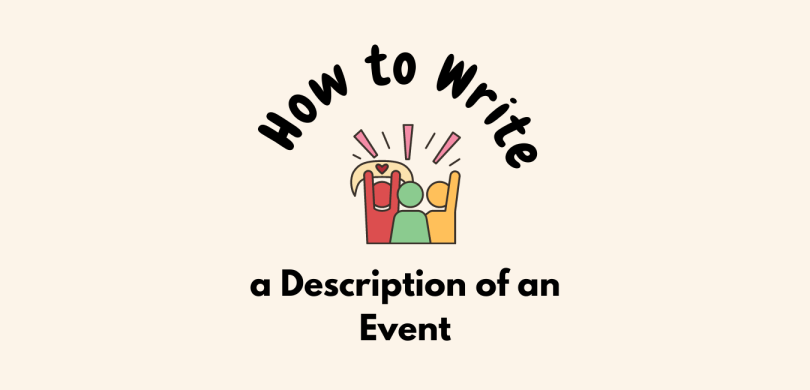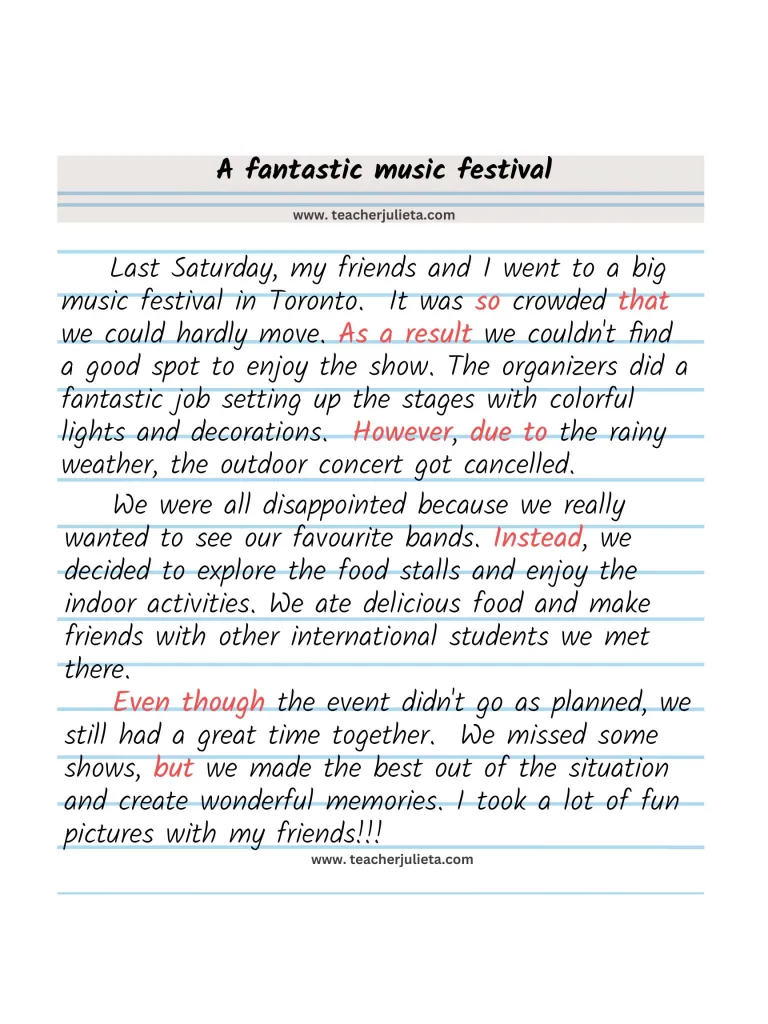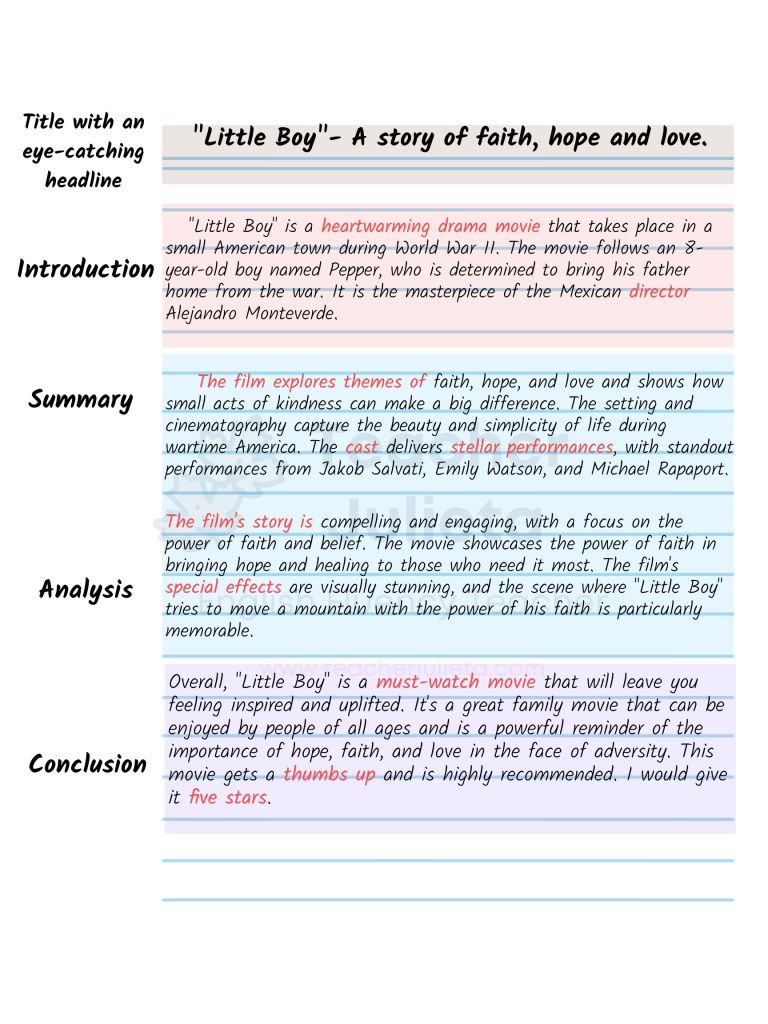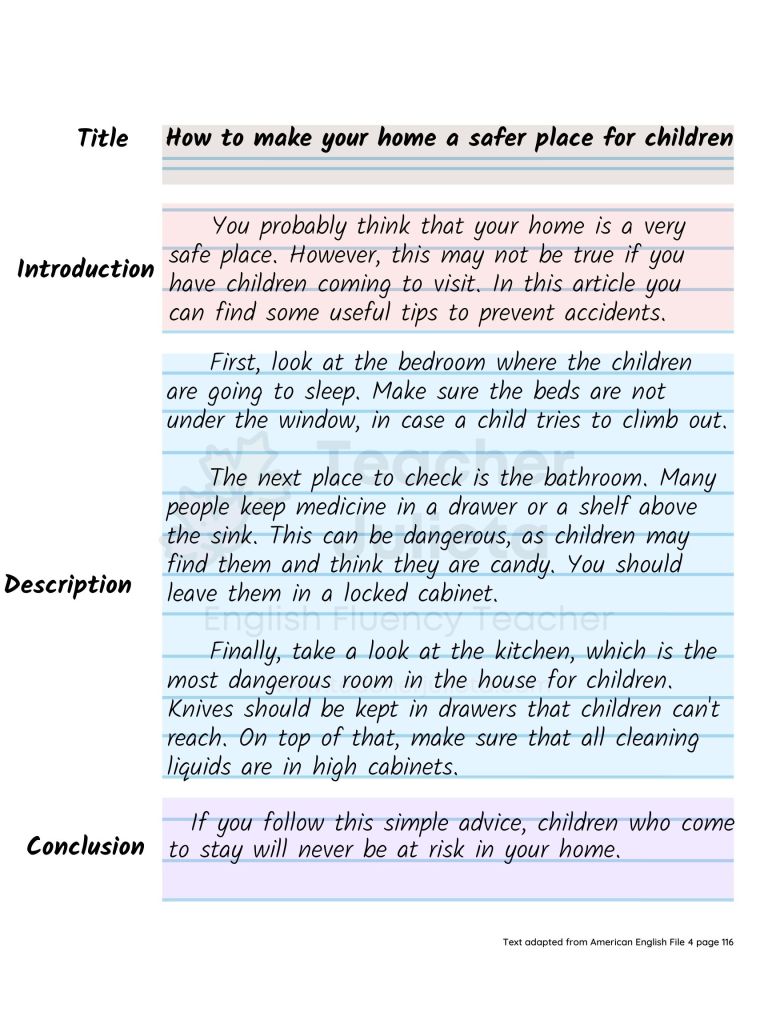5 minutes
(En español 🇪🇸)
Si tienes dificultades para escribir de forma coherente en inglés, quizás el problema sea que también tengas problemas para escribir correctamente en español.
Algunas de las causas de este problema pueden ser:
- Falta de vocabulario: desconoces los sinónimos y antónimos de las palabras.
- Desconocimiento de la gramática básica: no sabes las conjugaciones básicas ni en qué contextos utilizarlas. No sabes como expresar la misma idea usando diferentes estructuras gramaticales. Tampoco sabes distinguir entre diferentes grupos de palabras, por ejemplo: sustantivos, verbos, adjetivos, adverbios, artículos y preposiciones.
- Desconoces las reglas básicas de puntuación: no sabes como estructurar una oración simple ni como conectar tus ideas de forma coherente en un párrafo. Tampoco sabes como usar conectores para hilar tus ideas de forma fluida.
Al extrapolar estas deficiencias al inglés, entonces terminas escribiendo frases muy largas e incoherentes que son muy difíciles de entender.
Un consejo que quizás suene aburrido, es que estudies un poquito de gramática básica en español. No tienes que volverte experto en gramática, pero si saber lo más básico.
Otro consejo que también es de gran ayuda es la lectura. ¡LEE! Generalmente un buen lector, también es un buen escritor. Mientras más leas, más variedad de recursos léxicos (frases, palabras, expresiones) tendrás. Al mismo tiempo, tu cerebro aprenderá de forma natural a organizar y categorizar ideas y pensamientos.
Uno de los errores más comunes al escribir en español es el uso excesivo de las comas.
Veamos el siguiente ejemplo tomado del blog de Diana P. Morales, escritora española y ganadora del premio Ignotus 2020.
EL LABERINTO DE LAS COMAS
“Aquel era un bonito día de primavera, uno de esos en los que apetece salir a pasear y gozar del placer que te brinda la naturaleza, Laura viendo todo esto desde la ventana de su habitación decidió salir a dar un paseo, poniéndose un calzado, cómodo, salió a la calle dispuesta a caminar por los senderos del monte, contenta, feliz, pensando en sus cosas, el día se estaba terminando, ella seguía caminando sin darse cuenta de las horas que pasaban”
Vamos a analizar por qué este texto es confuso y difícil de leer:
- Las frases son muy largas.
- No se puede distinguir en dónde comienza una idea y en dónde termina.
- Este párrafo tiene muchas ideas, pero están todas mezcladas en un solo párrafo.
- Este párrafo tiene muchísimas comas.
Truquitos para evitar este error:
Un consejo para darnos cuenta si la información que hemos incluido en un párrafo es confusa, es que leas en voz alta el párrafo. Debes dar una pausa muy breve para las comas y una pausa mucho más larga para los puntos.
También podemos pedirle a otra persona que lea el texto en voz alta, así nos podremos dar cuenta si nuestras ideas son coherentes y si hemos usado los signos de puntuación correctos.
¿Cómo usar las comas (,) de forma correcta?
Ahora brevemente te explicaré como usar las comas de forma adecuada en español (secreto: el uso de la coma es muy similar en inglés, aunque hay algunos casos un poquito diferentes). Las comas se utilizan para separar frases y hacer pequeñas pausas en una oración o párrafo.
Una frase u oración es un conjunto de palabras que tienen un sentido lógico y están compuestas de:
- Un sujeto ( el que realiza la acción)
- Un verbo (la acción realizada)
- Un complemento (es opcional ). Puede ser:
- un objeto directo (¿qué?)
- un objeto indirecto (¿a quién?)
- un adverbio de lugar y tiempo
Podemos combinar varias frases (oraciones) entre sí para formar una oración compleja. Para poderlo hacer necesitamos un nexo que puede ser:
- Una conjunción: Palabra que se utiliza para unir dos o más partes de una oración o dos o más oraciones. Ejemplo: María estudiaba mientras su madre cocinaba
- Una coma (,): María estudiaba, su madre cocinaba y sus hermanos jugaban en el patio.
NOTA: La coma se usa solamente para separar ideas que ocurren al mismo tiempo. (He ahí la importancia de saber un poquito de gramática y tiempos verbales). Un error muy común que cometen los estudiantes es usar comas para separar ideas que ocurren en tiempos diferentes.
Ejemplo: María estudiaba, su hermano fue al parque, su madre lava la ropa, son una familia feliz.
Truquitos para evitar este error:
1. Reemplazar las comas por conjunciones
Si tienes duda si poner una coma o no, intenta remplazar la coma por una conjunción (y, mientras, ni etc.)
Ejemplo: María estudiaba mientras su hermano fue al parque y su madre lava la ropa y son una familia feliz.
Como te puedes dar cuenta, la oración anterior es incoherente. Es decir, carece de sentido y es muy confusa.
Si la coma no se puede sustituir por una conjunción, entonces será necesario que reestructures tus oraciones.
2. Usar frases breves
- Las frases breves son claras y concisas. Evitan la confusión.
- Las frases breves llaman la atención y son fáciles de leer.
Una vez que hayas dominado la escritura de frases breves, notarás que poco a poco podrás escribir frases más largas que sean elocuentes y muy interesantes.
Aquí te comparto un ejemplo ilustrativo sobre como suena un párrafo compuesto solo de frases breves y otro que tiene una combinación de frases breves y frases largas pero coherentes.
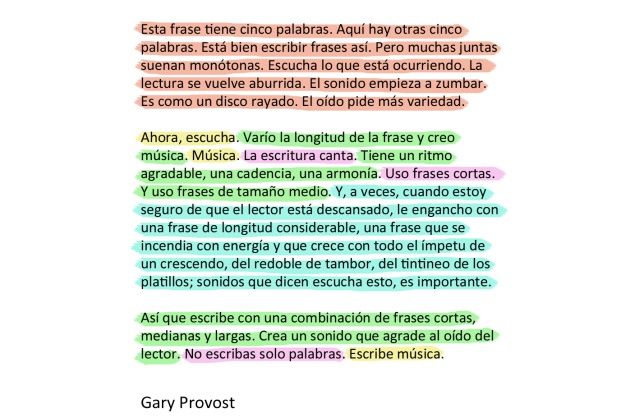
Espero que esta explicación te ayude a visualizar y organizar tus ideas al momento de escribir.

 Pro tips for writing a review of a place
Pro tips for writing a review of a place Time to practice
Time to practice


